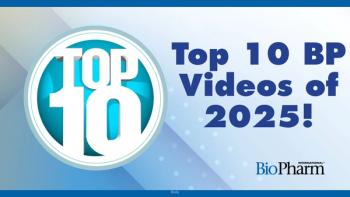
Amgen’s Tumultuous Relationship with Biosimilars
In 2016, Amgen will simultaneously fight off biosimilar competitors to its legacy products and prepare to file its own follow-on products with regulators.
Although Amgen said in a third-quarter earnings call on Oct. 28, 2015 that biosimilars for Neupogen have not yet caused significant revenue erosion, the company acknowledged the large financial impact that biosimilars will likely have in the near term.
When the biosimilar regulatory landscape began to unfold prior to the approval of Zarxio, the first biosimilar approved in the United States, it seemed unclear if players like Amgen were for or against the development of biosimilars. The first US biosimilar threatened the company’s market share of its drug Neupogen (filgrastim), so as early as 2010, Amgen began pushing for the inclusion of clinical trials to demonstrate biosimilarity, distinguishable names, extensive post-approval studies, and unique numbering under the Healthcare Common Procedure Coding System (HCPCS) and National Drug Code (NDC) reimbursement schemes.
Because Amgen was primarily positioned to protect the revenue stream from its blockbuster Neupogen, it benefitted from the argument that there are many unknowns surrounding which structural variations associated with biosimilars will be clinically significant. Minor changes in formulation, Amgen has said, are not always detected through analytical studies, and many of these seemingly minor composition changes could have major impacts on patient safety. Amgen has notoriously proclaimed that “distinct manufacturing processes will result in qualitative differences in process impurities” and that both qualitative and quantitative differences in product-related variants, such as those that occur as a result of post-translational modifications,
By insisting on all of the aforementioned safeguards for the approval and pharmacovigilance of biosimilars, some industry experts wonder if Amgen may be making the process harder for itself when it comes time for Amgen to submit its own biosimilar applications to FDA. Amgen has nine biosimilar molecules in development and expects to launch its first biosimilar (ABP 501), a biologic copy of Humira (adalimumab), in 2017, although some analysts argue that a launch of this product before 2019 in unlikely. In addition to its biosimilar for Humira-which Amgen expects to submit to FDA by the end of 2015-Amgen is also developing a biosimilar (ABP 215) to VEGF-inhibitor Avastin (bevacizumab). Both
Will Amgen dance?
According to statements during the call from Bob Bradway, chairman and CEO of Amgen, Amgen is currently preparing to file clinical trial data with FDA for its version of Humira. Bradway alluded to the fact that the company expects legal pushback from AbbVie, the original developer of Humira; according to the call transcript on Seeking Alpha, Bradway said the company recognizes “that there is intellectual property here that needs to be respected,” but also said it will “continue to advance its molecule” and “continue to assess the intellectual property that’s in place.” Bradway also seemed to indicate Amgen’s intention to fully engage in the patent dance: “And if we have a dispute, well the good news is, there’s a process for resolving that dispute and we will push forward on that basis.”
Because Amgen sought injunctive relief in 2015 to prevent Sandoz from marketing Zarxio until Sandoz complied with the Biologics Price Competition and Innovation Act (BPCIA) patent information exchange procedures, it is likely that Amgen will participate in the BPCIA requirements and will do the patent “dance”. In Amgen’s lawsuit with Sandoz over Zarxio, Amgen has argued that the procedural steps in the BPCIA are mandatory, including the provision that says the biosimilar sponsor should provide the reference product sponsor (RPS) with the same application it submits to FDA. By agreeing to promenade, as the biosimilar applicant, Amgen will be able to limit the number of patents that a RPS can assert in the first wave of BPCIA litigation to one patent, according to Donald Ware, Partner at Foley Hoag LLP. If Amgen chooses to dance, reference product sponsors will likely choose an infringement action, rather than a declaratory judgment, says Ware, “in which the RPS will have the choice of which patent to assert.” If biosimilar product sponsors do not adhere to all of the steps laid out in the patent dance, they open themselves up to potentially facing declaratory judgments from RPSs on numerous possible patents, which could span those patents related to both the compound itself and its method or process of manufacture.
Whether the RPS chooses to file a lawsuit on a compound or method patent will largely depend on the innovator product’s lifecycle and if the broad compound patents associated with the reference product have expired by the time the biosimilar is due to come on the market. The choice of which single patent to challenge will rely on the “timing of the litigation and the breadth of the RPS’s patent protection,” notes Ware. “In all likelihood, [the RPS] will assert a broad compound patent if one exists to cover the biosimilar, in part because until further discovery into the biosimilar’s manufacturing process, the RPS may not know exactly what processes are being used.”
Source: Seeking Alpha
Newsletter
Stay at the forefront of biopharmaceutical innovation—subscribe to BioPharm International for expert insights on drug development, manufacturing, compliance, and more.




